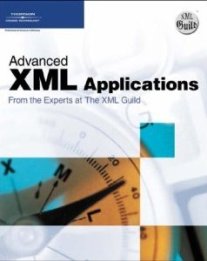jp3-52:AirspaceCoordinatingMeasureUsageCodeSimpleType
A data type for a designator for a JP3-52 Airspace Coordinating Measure (ACM) Usage Code.
Simple type information
Namespace: http://release.niem.gov/niem/codes/jp3-52/3.1/
Schema document: codes/jp3-52/3.1/jp3-52.xsd
Content
Valid value Description AAR Air-to-Air Refueling Area; Airspace of defined dimensions set aside for air-to-air refueling operations. ABC Airborne Command and Control Area; Airspace of defined dimensions established specifically for aircraft conducting battlefield command and control. ACA Airspace Coordination Area; A three-dimensional block of airspace in a target area, established by the appropriate ground commander, in which friendly aircraft are reasonably safe from friendly surface fires. The airspace coordination area may be formal or informal. ACP Air Control Point; A point that is defined and used for navigation, command and control, and communication. ACSS Airspace Control Subarea/Sector; A subelement of the airspace control area, established to facilitate the control of the overall area. Airspace control sector boundaries normally coincide with air defense organization subdivision boundaries. Airspace control sectors are designated in accordance with procedures and guidance contained in the airspace control plan in consideration of Service component, host-nation, and multinational airspace control capabilities and requirements. ADAA Air Defense Action Area; An area and the airspace above it within which friendly aircraft of surface-to-air weapons are normally given precedence in operations except under specified conditions. ADIZ Air Defense Identification Zone; Airspace of defined dimensions within which the ready identification, location, and control of airborne vehicles are required. ADVRTE Advisory Route; A designated route along which air traffic advisory service is available. ADZ Amphibious Defense Zone; An area encompassing the amphibious objective area and adjoining airspace as required for the accompanying naval forces for the purpose of air defense. AEW Airborne Early Warning Area; Airspace of defined dimensions established specifically for aircraft conducting early warning. AIRCOR Air Corridor; A restricted air route of travel specified for use by friendly aircraft and established for the purpose of preventing friendly aircraft from being fired on by friendly forces. AIRRTE Air Route; The navigable airspace between two points, identified to the extent necessary for the application of flight rules. ALERTA Alert Area; Airspace that may contain a high volume of pilot training activities or an unusual type of aerial activity, neither of which is hazardous to aircraft. ALTRV Altitude Reservation; A block of altitude reserved for aircraft to transit or loiter. AOA Amphibious Objective Area; A geographical area (delineated for command and control purposes in the initiating directive) within which is located the objective(s) to be secured by the amphibious force. This area must be of sufficient size to ensure accomplishment of the amphibious forces mission and must provide sufficient area for conducting necessary sea, air, and land operations. APPCOR Approach Corridor; Airspace established for the safe passage of land-based aircraft joining or departing a maritime force. ARWY Airway; A control area or portion thereof established in the form of a corridor equipped with radio navigational aids. ASCA Airspace Control Area; Airspace that is laterally defined by the boundaries of the area of operations. The airspace control area may be subdivided into airspace control subareas. (AAP-6) ATSRTE Air Traffic Service Route; A specified route designed for channeling the flow of traffic as necessary for the provision of air traffic services. BCL Battlefield Coordination Line; A supplementary measure, which facilitates the expeditious attack of surface targets of opportunity between the measure (the BCL) and the fire support coordination line. BDZ Base Defense Zone; An air defense zone established around an airbase and limited to the engagement envelope of short-range air defense weapons systems defending that base. Base defense zones have specific entry, exit, and identification, friend or foe, procedures established. A zone established around airbases to enhance the effectiveness of local ground-based air defense systems. BNDRY Boundary; A line that delineates surface areas for the purpose of facilitating coordination and deconfliction of operations between adjacent units, formations, or areas. In land warfare, a line by which areas of responsibility between adjacent units and/or formations are defined (AAP-6). BULL Bulls-Eye; An established reference point from which the position of an object can be referenced. BZ Buffer Zone; Airspace designed specifically to provide a buffer between various airspace coordinating measures. CA Coordinating Altitude (USMTF uses Coordination Level); An airspace coordinating measure that uses altitude to separate users as the transition between different airspace coordinating entities. CADA Coordinated Air Defense Area; A mutually defined block of airspace between a land-based air commander and a naval commander when their forces are operating in close proximity to one another. (AJP-3.3.5) CAP Combat Air Patrol; An aircraft patrol provided over an objective area, the force protected, the critical area of a combat zone, or in an air defense area, for the purpose of intercepting and destroying hostile aircraft before they reach their targets. CAS Close Air Support Holding Area; Airspace designated for holding orbits and used by rotary-and fixed-wing aircraft that are in close proximity to friendly forces. CBA (NATO) Cross Border Area; A temporary segregated area established over international boundaries for specific operational requirements. CCZONE Carrier Control Zone; The airspace within a circular limit defined by 5 miles horizontal radius from the carrier, extending upward from the surface to and including 2,500 feet unless otherwise designated for special operations, and is under the cognizance of the air officer during visual meteorological conditions. CDR Conditional Route; A non-permanent air traffic service route or portion thereof that can be planned and used only under certain conditions. CFL Coordinated Fire Line; A line beyond which conventional and indirect surface fire support means may fire at any time within the boundaries of the establishing headquarters without additional coordination. The purpose of the coordinated fire line is to expedite the surface-to-surface attack of targets beyond the coordinated fire line without coordination with the ground commander in whose area the targets are located. A line beyond which conventional or improved indirect fire means, such as mortars, field artillery, and naval surface fire may fire without additional coordination. (AJP-3.3.5) CL USMTF Coordination Level (Coordinating Altitude); A procedural method to separate fixed- and rotary-wing aircraft by determining an altitude below which fixed-wing aircraft normally will not fly. CLSA Class-A Airspace; Generally, airspace from 18,000 feet mean sea level (MSL) up to and including flight level 600, including airspace overlying the waters within 12 nautical miles of the contiguous states and Alaska. Visual Flight Rules (VFR) operations are not permitted in Class A airspace. CLSB Class-B Airspace; Generally, airspace from the surface to 10,000 feet MSL surrounding the nations busiest airports in terms of airport operations or passenger enplanements. ATC provides separation between all aircraft inside Class B airspace. CLSC Class-C Airspace; Generally, airspace from the surface to 4,000 feet above the airport elevation (charted in MSL) surrounding those airports that have an operational control tower, are serviced by radar approach control, and have a certain number of instrument flight rules (IFR) operations or passenger enplanements. ATC provides separation between VFR and IFR inside Class C airspace. CLSD Class-D Airspace; Generally, airspace from the surface to 2,500 feet above the airport elevation (charted in MSL) surrounding those airports that have an operational control tower. The configuration of each Class D airspace is individually tailored and when instrument procedures are published, the airspace will normally be designated to contain the procedures. Prior to entering Class D airspace, two-way radio communication must be established and maintained with the ATC facility providing air traffic service. CLSE Class-E Airspace; Generally, if the airspace is not Class A, B, C, or D, and it is controlled airspace, it is Class E airspace. Also includes federal airways. CLSF Class-F Airspace; Airspace in which instrument flight rules (IFR) and visual flight rules flights are permitted; all participating IFR flights receive an air traffic advisory service, and all flights receive flight information service if requested. CLSG Class-G Airspace; Airspace not assigned as A, B, C, D, or E is uncontrolled airspace and is designated as Class G airspace. CONTZN Control Zone; A controlled airspace extending upward from the surface of the Earth to a specified upper limit. (AAP-6) COZ Crossover Zone; Airspace beyond the missile engagement zone into which fighters may pursue targets to complete interception. CP Contact Point; In air operations, the position at which a mission leader makes radio contact with an air control agency. CTA Control Area; A controlled airspace extending upward from a specified limit above the Earth. (AAP-6) DA Danger Area; In air traffic control, an airspace of defined dimensions within which activities dangerous to the flight of aircraft may exist at specified times. DZ Drop Zone; A specific area upon which airborne troops, equipment, or supplies are airdropped. EC Electronic Combat; Airspace established specifically for aircraft engaging in electronic combat. EG Entry/Exit Gate; The point to which an aircraft will be directed to commence the transit inbound/outbound from an airfield or force at sea. FACA Force Air Coordination Area; No description provided in specification. FADIZ Fleet Air Defense Identification Zone (USMTF positive identification radar advisory zone [PIRAZ]); A specified area established for identification and flight following of aircraft in the vicinity of a fleet-defended area. FARP Forward Arming and Refueling Point; A temporary facility degrees organized, equipped, and deployed by an aviation commander, and normally located in the main battle area closer to the area where operations are being conducted than the aviation units combat service area degrees to provide fuel and ammunition necessary for the employment of aviation maneuver units in combat. The forward arming and refueling point permits combat aircraft to rapidly refuel and rearm simultaneously. FEBA Forward Edge of the Battle Area; The foremost limits of a series of areas in which ground combat units are deployed, excluding the areas in which the covering or screening forces are operating, designed to coordinate fire support, the positioning of forces, or the maneuver of units. FFA Free Fire Area; A specific area into which any weapon system may fire without additional coordination with the establishing headquarters. FIR Flight Information Region; An airspace of defined dimensions within which flight information service and alerting service are provided. FIRUB Fire-Power Umbrella; An area of specified dimensions defining the boundaries of the airspace over a naval force at sea within which the fire of ships anti-aircraft weapons can endanger aircraft, and within which special procedures have been established for the identification and operation of friendly aircraft. FLOT Forward Line of Own Troops; A line that indicates the most forward positions of friendly forces in any kind of military operation at a specific time. The forward line of own troops normally identifies the forward location covering screening forces. The forward line of own troops may be at, beyond, or short of the forward edge of the battle area. An enemy forward line of own troops indicates the forward-most position of hostile forces. A line that indicates the most forward positions of friendly forces in any kind of military operation at a specific time. (AAP-6) FSCL Fire Support Coordination Line; A fire support coordination measure that is established and adjusted by appropriate land or amphibious force commanders within their boundaries in consultation with superior, subordinate, supporting, and affected commanders. Fire support coordination lines facilitate the expeditious attack of surface targets of opportunity beyond the coordinating measure. A fire support coordination line does not divide an area of operations by defining a boundary between close and deep operations or a zone for close air support. The fire support coordination line applies to all fires of air, land, and sea-based weapon systems using any type of ammunition. Forces attacking targets beyond a fire support coordination line must inform all affected commanders in sufficient time to allow necessary reaction to avoid fratricide. Supporting elements attacking targets beyond the fire support coordination line must ensure that the attack will not produce adverse effects on, or to the rear of, the line. Short of a fire support coordination line, all air-to-ground and surface-to-surface attack operations are controlled by the appropriate land or amphibious force commander. The fire support coordination line should follow well-defined terrain features. Coordination of attacks beyond the fire support coordination line is especially critical to commanders of air, land, and special operations forces. In exceptional circumstances, the inability to conduct this coordination will not preclude the attack of targets beyond the fire support coordination line. However, failure to do so may increase the risk of fratricide and could waste limited resources. Within an assigned area of operations, a line established by a land or amphibious force commander to denote coordination requirements for fires by other force elements that may affect the commanders current and planned operations. The fire support coordination line applies to fires of air, ground, or sea weapons using any type of ammunition against surface or ground targets. The establishment of the fire support coordination line must be coordinated with the appropriate commanders and supporting elements. Attacks against surface or ground targets short of the fire support coordination line must be conducted under the positive control or procedural clearance of the associated land or amphibious force commander. Unless in exceptional circumstances, commanders of forces attacking targets beyond the fire support coordination line must coordinate with all affected commanders in order to avoid fratricide and to harmonize joint objectives. Note: In the context of this definition the term "surface targets" applies to those in littoral or inland waters within the designated area of operations. (AAP-6) Boundary used to coordinate fires of air, ground, or sea weapon systems against surface targets. (AJP-3.3.5) HG Hand Over Gate; The point at which the control of the aircraft, if radar hand-over is used, changes from one controller to another. HIDACZ High-Density Airspace Control Zone; Airspace designated in an airspace control plan or airspace control order, in which there is a concentrated employment of numerous and varied weapons and airspace users. A high density airspace control zone has defined dimensions, which usually coincide with geographical features of navigational aids. Access to a high density airspace control zone is normally controlled by the maneuver commander. The maneuver commander can also direct a more restrictive weapons status within the high density airspace control zone. Airspace of defined dimensions, designated by the airspace control authority, in which there is a concentrated employment of numerous and varied weapons/airspace users. (AAP-6) IFFOFF Identification, Friend or Foe (IFF) Switch Off Line; The line demarking where friendly aircraft stop emitting an IFF signal. IFFON IFF Switch On Line; The line demarking where friendly aircraft start emitting an IFF signal. ISP Identification Safety Point; A point at which aircraft, on joining a maritime force, will attempt to establish two-way communications with the surface force and commence identification procedures. ISR Identification Safety Range; The minimum range to which aircraft may close to a maritime force without having been positively identified as friendly to ensure that the task force/task group does not mistake the aircraft for hostile. JEZ Joint Engagement Zone; In air defense, that airspace of defined dimensions within which multiple air defense systems (surface-to-air missiles and aircraft) are simultaneously employed to engage air threats. JOA Joint Operations Area; Area of land, sea, and airspace, defined by a geographic combatant commander or subordinate unified commander, in which a joint force commander (usually a joint task force commander) conducts military operations to accomplish a specific mission. A temporary area defined by the Supreme Allied Commander Europe, in which a designated joint commander plans and executes a specific mission at the operational level of war. A joint operations area and its defining parameters, such as time, scope of the mission, and geographical area, are contingency- or mission-specific and are normally associated with combined joint task force operations. (AAP-6) KILLBX Kill Box; A kill box is a three-dimensional area used to facilitate the integration of joint fires. LFEZ Land Fighter Engagement Zone (LFEZ is the USTMF used for Fighter Engagement Zone [FEZ]); In air defense, that airspace of defined dimensions within which the responsibility for engagement of air threats normally rests with fighter aircraft. NOTE: To ensure the operational utility of a FEZ, input a LFEZ into a USMTF system. USMTF does not recognize the term FEZ. LMEZ Land Missile Engagement Zone; Airspace of defined dimensions within which responsibility for engagement of air threats normally rests with surface based air defense system. LZ Landing Zone; Any specified zone used for the landing of aircraft. MFEZ Maritime Fighter Engagement Zone; The airspace beyond the crossover zone out to limits defined by the officer in tactical command, in which fighters have freedom of action to identity and engage air targets. MG Marshalling Gate; A point to which aircraft fly for air traffic control purposes prior to commencing an outbound transit after takeoff or prior to landing. MISARC Missile Arc; An area of 10 degrees or as large as ordered by the officer in tactical command, centered on the bearing of the target with a range that extends to the maximum range of the surface-to-air missile. MMEZ Maritime Missile Engagement Zone; A designated airspace in which, under weapons control status "weapons free," ships are automatically cleared to fire at any target which penetrates the zone, unless known to be friendly, adhering to airspace control procedures or unless otherwise directed by the anti-warfare commander. MOA Military Operations Area; Airspace designated outside Class A airspace area to separate or segregate certain non-hazardous military from IFR traffic and to identify for visual flight rules (VFR) traffic where these activities are conducted. MRR Minimum Risk Route; A temporary corridor of defined dimensions recommended for use by high-speed, fixed-wing aircraft that presents the minimum known hazards to low-flying aircraft transiting the combat zone. NAVRTE Area Navigation Route; An air traffic services route established for the use of aircraft capable of employing area navigation. NFA No Fire Area; An area designated by the appropriate commander into which fires or their effects are prohibited. NOFLY No Fly Area; Airspace of specific dimensions set aside for a specific purpose in which no aircraft operations are permitted, except as authorized by the appropriate commander and controlling agency. PROHIB Prohibited Area; A specified area within the land areas of a state or its internal waters, archipelagic waters, or territorial sea adjacent thereto over which the flight of aircraft is prohibited. May also refer to land or sea areas to which access is prohibited. PZ Pickup Zone; Aerial retrieval area. RA Restricted Area; Restricted area (air) degrees Designated areas established by appropriate authority over which flight of aircraft is restricted. They are shown on aeronautical charts, published in notices to airmen, and provided in publications of aids to air navigation. An airspace of defined dimensions, above the land areas or territorial waters of a state, within which the flight of aircraft is restricted in accordance with certain specified conditions. RCA (NATO) Reduced Coordination Area; A portion of defined dimensions within which general air traffic is permitted "off-route" without requiring general air traffic controllers to initiate coordination with operational air traffic controllers. RECCE Reconnaissance Area; Airspace established specifically for aircraft conducting reconnaissance. RFA Restrictive Fire Area; An area in which specific restrictions are imposed and into which fires that exceed those restrictions will not be delivered without coordination with the establishing headquarters. RFL Restrictive Fire Line; A line established between converging friendly surface forces that prohibits fires or their effects across that line. ROA Restricted Operations Area; Airspace of defined dimensions, designated by the airspace control authority, in response to specific operational situations/requirements within which the operation of one or more airspace users is restricted. RTF Return to Force; Planned route profiles for use by friendly aircraft returning to an aviation-capable ship. SAAFR Standard Use Army Aircraft Flight Route; Route established below the coordinating altitude to facilitate the movement of Army aviation assets. Routes are normally located in the corps through brigade rear areas of operation and do not require approval by the airspace control authority. SAFE Safe Area for Evasion; A designated area in hostile territory that offers the evader or escapee a reasonable chance of avoiding capture and of surviving until he can be evacuated. SAFES Safe Sector (USMTF Safety Sector); Established to route friendly aircraft to maritime forces with minimum risk. (AJP 3.3.5) SARDOT Search and Rescue Point; A reference point used in search and rescue operations. SC Special Corridor; An area established to accommodate the special routing requirements of special missions. SCZ Ship Control Zone; An area activated around a ship operating aircraft, which is not to be entered by friendly aircraft without permission, in order to prevent friendly interference. SEMA Special Electronic Mission Area; Airspace of defined dimensions established specifically for airborne platforms conducting missions. Generally, it is designed for aircraft such as Compass Call. SHORAD Short-Range Air Defense Engagement Zone; In air defense, that airspace of defined dimensions within which the responsibility for engagement of air threats normally rests with short-range air defense weapons. It may be established within a low-or high-altitude missile engagement zone. SL Safe Lane; A bi-directional lane connecting an airbase, landing site, and/or base defense zone to adjacent routes/corridors. Safe lanes may also be used to connect adjacent activated routes/corridors. SOF Special Operations Forces (USMTF used for joint special operations area [JSOA]); An area of land, sea, and airspace assigned by a joint force commander to the commander of a joint special operations force to conduct special operations activities. It may be limited in size to accommodate a discrete direct action mission or may be extensive enough to allow a continuing broad range of unconventional warfare operations. NOTE: To obtain the operational utility of a JSOA, input SOF into a USMTF system as USMTF does not recognize JSOA. SSMS Surface-to-Surface Missile System; Airspace defined specifically for Army Tactical Missile System and Tomahawk land-attack missile launch and impact points. TC Transit Corridor; A bi-directional corridor in the rear area. Air traffic services not normally provided. TCA Terminal Control Area ; A control area or portion thereof normally situated at the confluence of air traffic service routes in the vicinity of one or more major airfields. TL Traverse Level; That vertical displacement above low-level air defense systems, expressed both as a height and an altitude, at which aircraft can cross that area. TMRR Temporary Minimum Risk Route; A temporary route established to route air traffic between transit routes or the rear boundary of the forward area and their operations area in direct support of ground operations. TR Transit Route; In air operations, a temporary air corridor of defined dimensions established in the forward area to minimize the risks to friendly aircraft from friendly air defenses or surface forces. TRNG Training Area; Airspace created during contingency for the purpose of conducting training. TRSA Terminal Radar Service Area ; Airspace surrounding designated airports wherein ATC provides radar vectoring, sequencing, and separation on a full-time basis for all IFR and participating VFR aircraft. TSA Temporary Segregated Area; An airspace of defined dimensions within which activities require the reservation of airspace for the exclusive use of specific users during a determined period of time. UA Unmanned Aircraft (USMTF uses UAV [unmanned aerial vehicle]); Airspace of defined dimensions created specifically for UA operations. Generally, this airspace will consist of the area in which UA missions are conducted, not en route airspace. WARN Warning Area ; Airspace of defined dimensions extending from three nautical miles outward from the coast of the US that contains activity that may be hazardous to nonparticipating aircraft. WFZ Weapons Free Zone; An air defense zone established for the protection of key assets or facilities, other than air bases, where weapons systems may be fired at any target not positively recognized as friendly.
Used by
- Element jp3-52:AirspaceCoordinatingMeasureUsageCode via derived type jp3-52:AirspaceCoordinatingMeasureUsageCodeType
Type inheritance chain
- xsd:token
- jp3-52:AirspaceCoordinatingMeasureUsageCodeSimpleType
- extended by jp3-52:AirspaceCoordinatingMeasureUsageCodeType
- jp3-52:AirspaceCoordinatingMeasureUsageCodeSimpleType



